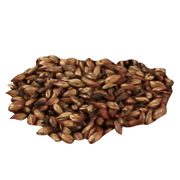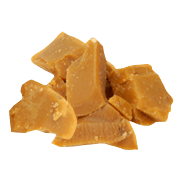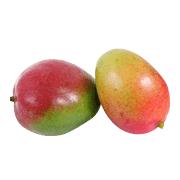GlenlivetSingle Malt Scotch Whisky
For many years afterwards he had to carry a pair of pistols to protect himself and his family from his aggrieved erstwhile colleagues, the moonshiners, but the quality of his spirit quickly made him and his distillery famous and set a precedent that sparked the birth of the industry as we know it today.
Famously the first legal Scottish distillery in Speyside after owner George Smith took the brave step of applying for the first licence to distil following the Excise Act of 1823, Glenlivet became so synonymous with the best quality that the company was forced to take legal action in the 1880s to prevent its rivals passing off their own wares as 'the Real Stuff'. Despite the Smith family winning the exclusive right for their product to be known as 'The' Glenlivet, dozens of other distilleries persisted with the usage of the Glenlivet suffix (eg Macallan-Glenlivet) for decades afterwards.
Although the distillery's standard 12yo epitomises the kind of soft, smooth, lighter style of Speyside malts beloved of so many whisky fans, Glenlivet's spirit has also proven itself to be more than capable of withstanding long years of wood-ageing. The ongoing Cellar Collection was created to showcase some of the superb older malts in the distillery's archives, and some extremely old sherried vintages going back to the 1930s have been bottled by Gordon & Macphail.
HISTORY
Although The Glenlivet is famous as the first officially-licensed distillery in Scotland, after owner George Smith took the brave decision to take advantage of the 1823 Excise Act, the historical context of Smith's bold move and the ramifications for the industry as a whole and for Smith and his family personally are less well-understood by the wider world of whisky enthusiasts.
The glen of the river Livet is, too put it mildly, rather remote. These days the journey from the nearest settlement, Elgin, is a short drive north through the picturesque Cairngorm mountains, although the distillery is still isolated enough to be unlikely to be happened upon by chance – as Brand Ambassador Ian Logan puts it, "If you find us by accident, you're lost".
Back in the early 1800s, though, before the Excise Act made legal distillation a reality, those twenty-odd miles from Elgin were a gruelling hike through some of the country's most inhospitable terrain - a daunting task for the Excise officers charged with both the enforcement of the law and the apprehension of the illicit distillers who flouted it.
In that time, distillation (and indeed law-enforcement) was something akin to guerrilla warfare, with a huge number of small independent bands of distillers and smugglers in a constant battle with the Excisemen. This was no simple game of Hide and Seek, however – the stakes were high enough that the men involved on both sides went to work armed to the teeth. The distillers risked both liberty and livelihood if they were caught making or transporting spirit, while the 'gaugers', for their part, were in peril of their lives if they were found destroying equipment or caught outnumbered while out on the prowl.
Despite this, the rewards of distillation were deemed by thousands of Highlanders to justify the risks, and the illicit industry continued to thrive. The gaugers were kept busy, too – in the year of the Excise Act, 1823, over 14,000 prosecutions were brought. Highland farmers, brought to their knees by punitive duties and other legal restrictions and barriers to entry, were effectively forced to illegally distil their surplus grain or go out of business.
The lawmen didn't have it all their own way, though – for every local distiller caught, there were plenty who got away with it. One of the tales of the time recounts the story of the Excise officer who went on a night march from Elgin with an escort of thirty armed enforcers. Arriving in the glen the following morning, the 'gaugers' were able to see the smoke from some fifty open-air stills spread across the length of the valley, and they eagerly set off to start destroying the illicit equipment – only to be confronted by a mob of several hundred smugglers roaring their defiance of the lawmen, who quickly decided that discretion was the better part of valour and were forced to beat a hasty retreat for their own safety.
Thus Glenlivet's inaccessibility was clearly to the advantage of the distillers who worked there – in such a barren, remote landscape, any lawmen attempting to crack down on the area could be spotted in plenty of time for the distillers to remove and hide the small, portable equipment of the day, and distillation could be carried out in relative peace.
This factor, alongside the purity of the clear spring water flowing down the mountains into the Livet, and feeding Josie's Well, The Glenlivet's water source, ensured that the quality of spirit made by the small, illicit stills was far superior to that made by the large, legal, Lowland distillers of the day, and ensured that Highland malt, though illegal, became known as 'the Real Stuff' and remained hugely popular across the social spectrum, from the humblest farmers to the titled aristocracy – King George IV famously requested a glass of Glenlivet during his state visit to Edinburgh in 1823.
It is probably not a coincidence that the revolutionary Excise Act permitting small-scale distillation and the reduction of duty – that same Act which persuaded George Smith to legitimise his operation by the purchase of that first license - followed later in the same year.
Nonetheless, going legitimate was still a bold and dangerous move for George Smith to take. By the time of the legislation, as we have seen, the illegal whisky business was well established, and those who practised it would have had deeply-entrenched anti-government attitudes, ingrained by years of hardship suffered as a result of the draconian taxes and restrictions previously imposed, which had effectively criminalised them by default.
In other words, when he applied for Speyside's first license to legally distil whisky, George Smith would have known very well that his actions would be seen as a serious betrayal. By effectively turning traitor on his former comrades-at-arms, Smith must have worried that he could have signed his own death warrant. Once it became known that Smith had switched sides, his life was in danger.
Certainly, after receiving death threats, Smith was taking no chances. For several years he was forced to protect his family from the reprisals of his neighbours with an armed guard around the distillery 24 hours a day. Smith said later, 'I was warned by my civil neighbours that they meant to burn the new distillery to the ground and me in the heart of it. The laird of Aberlour had presented me with a pair of hair trigger pistols worth ten guineas, and they were never out of my belt for years'.
George Smith's bravery and persistence paid off, however, and despite the ill-feeling amongst his former colleagues in the glen, others soon followed his lead and illegal distilling in the Highlands soon died out. Glenlivet went from strength to strength, in large part thanks to the company's Edinburgh agent Andrew Usher, who drove sales of the whisky forward and was responsible for creating one of the first ever blended whiskies, Usher's Old Vatted Glenlivet.
In order to keep up with demand, in 1858 a new distillery was built by Smith and his son John Gordon a mile further down the glen on Minmore Farm, where the distillery remains to this day. But legitimacy and increased success brought their own problems - the principle of which was imitations by unscrupulous distillers trying to ride on Glenlivet's coat-tails.
By 1880, with John Gordon now in control of the distillery, so many rival producers were passing off their own products as 'Glenlivet' that the area was known as 'the longest glen in Scotland' and the company was forced to take legal action to protect their brand name, which had been officially trademarked in 1876.
After a lengthy struggle, in 1884 Gordon won the right for his whisky to be the only one referred to as 'The' Glenlivet, although other distillers were still allowed to use the Glenlivet suffix on their labels (eg Macallan-Glenlivet) and, remarkably, many distillers continued to do so well into the 1980s.
By that time, the Glenlivet's fame had long spread worldwide, particularly in America, where Glenlivet was one of the first whiskies to be imported after the end of Prohibition in 1933. The Glenlivet has now been the USA's No.1 selling whisky for several years.
After Pernod Ricard bought Glenlivet in 2001 as part of their joint acquisition with Diageo of Seagram, the new owners stated their intention to make Glenlivet the world's best-selling single malt. In 2007, the brand became only the second single malt whisky to sell over 500,000 cases in a single year, moving up to the No.2 spot in terms of global sales in the process, and the target of overtaking Glenfiddich as the world's No.1 malt whisky remains.
To this end, in 2008 the Glenlivet embarked on a major extension, the first since 1978. The new plant, incorporating six new stills and eight new washbacks, was officially opened in June 2010, and increases the Glenlivet's capacity to over 10 million litres per annum.
Character and Style of Glenlivet
-
 Biscuits
Biscuits
-
 Malt
Malt
-
 Toffee
Toffee
-
 Mango
Mango
-
 Oak
Oak
Filter
Price Range
Bottling Status
Age
Vintage
Cask Type
Bottler
Series
Strength
Size
Single Cask
Limited Edition
Flavour Profile
Colouring

Glenlivet 18 Year Old Batch Reserve
$109.48
($156.40 per litre)

Glenlivet 200712 Year Old Distillery Reserve Collection
$84.98
($169.96 per litre)

Glenlivet 201110 Year Old Single Cask Edition
$74.35
($148.70 per litre)

Glenlivet Founder's Reserve
$37.68
($53.83 per litre)

Glenlivet 12 Year OldDouble Oak
$42.46
($60.66 per litre)

Glenlivet 200712 Year Old Sherry Cask Distillery Reserve Collection
$100.92
($201.85 per litre)

Glenlivet 15 Year OldFrench Oak Reserve
$63.72
($91.03 per litre)

Glenlivet 200616 Year Old Signatory
$116.92
($167.03 per litre)

Glenlivet 198136 Year Old Sherry Finish Signatory for The Whisky Exchange
$738.73
($1,055.33 per litre)

Glenlivet 21 Year OldArchive
$223.21
($318.88 per litre)

Glenlivet 21 Year OldThe Sample Room Collection
$249.79
($356.84 per litre)

Glenlivet Caribbean ReserveGift Box
$39.81
($56.87 per litre)

Glenlivet Captain's Reserve
$56.60
($80.86 per litre)

The Secret Series No.2 1992 (Glenlivet)29 Year Old Vintage Bottlers
$334.82
($478.32 per litre)

Glenlivet Cipher
$239.16
($341.65 per litre)

Glenlivet 12 Year OldBot.1960s
$850.34
($1,133.79 per litre)

Glenlivet 197127 Year Old Old Malt Cask
$1,169.22
($1,670.31 per litre)

Glenlivet 196725 Year Old Whyte & Whyte
$1,328.66
($1,771.54 per litre)

Glenlivet 12 Year OldBot.1980s
$186.01
($248.02 per litre)

Glenlivet 197843 Year Old Private Collection G&M
$2,232.14
($3,188.78 per litre)

Glenlivet 197843 Year Old Private Collection G&M
$2,232.14
($3,188.78 per litre)

Glenlivet 196834 Year Old Duncan Taylor
$1,275.51
($1,700.68 per litre)

Glenlivet 20118 Year Old Distillery Reserve Collection
$69.04
($138.07 per litre)

Glenlivet 12 Year OldBot.1980s
$239.16



 Glenlivet
Glenlivet